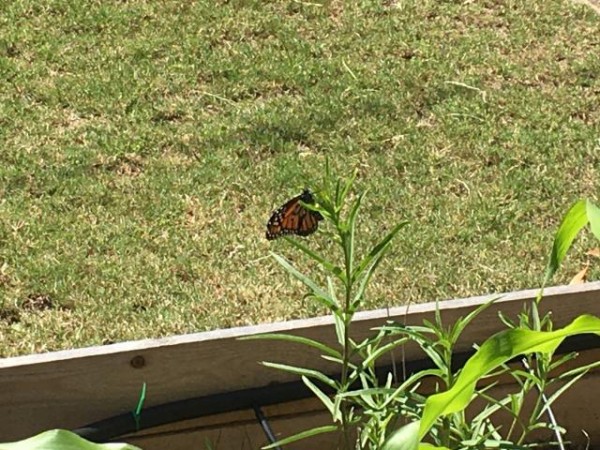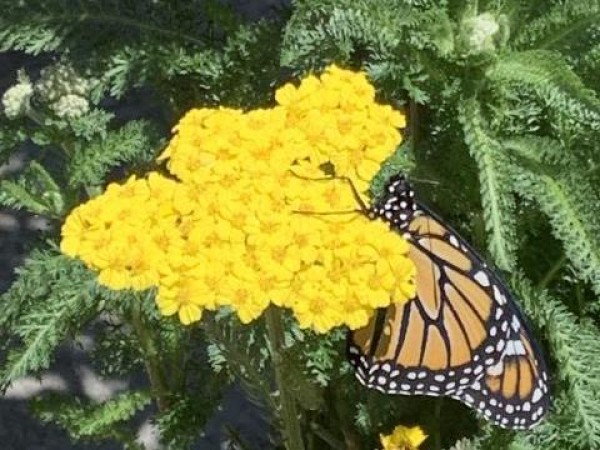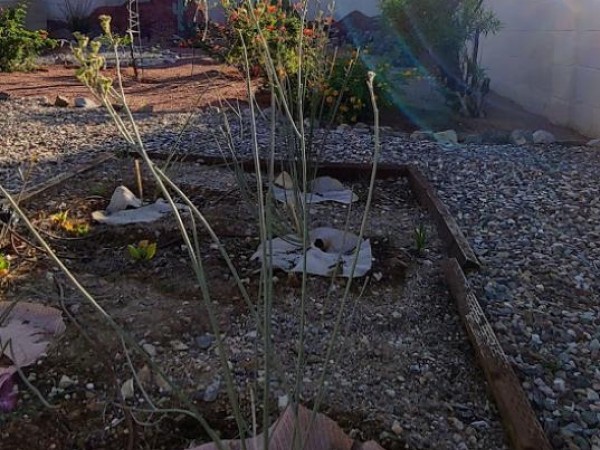Western Monarchs 2020 Spring Report #8
By Gail Morris
Spring Migration Pause
Windy and warm days graced both California and Arizona where monarchs were still present this week. Remigrants have now ended their life journey but the witness of their travels will be found in the eggs and larvae further east and north in California, Arizona and even reaching southern Nevada in most years by this date. This week will bring a significant weather change as temperatures soar with a high pressure system parking over the region, driving up temperatures to reach new highs of the season.
Monarch & Milkweed Sightings
Most monarch sightings were reported in California this week. Bonnie in San Diego, California, spotted her first larva of the season on April 15: “First larvae spotted. 2 instar.”
Nancy in Ventura, California saw a monarch on her milkweed on April 19. “One monarch with [a] torn wing here for 3rd day on the same plant.”
Joyce in Mountain View, California, saw her first two monarchs of the season on April 21. “The first Monarchs have finally arrived.”
As a new generation of monarchs expand its range, an important question will be, “Is the milkweed up?” In most parts of the country, milkweed dies back in the fall and reemerges each Spring. The first signs of emerging milkweed as well as photos of full milkweed stands helps us all learn how successful monarchs will be in laying their eggs.
In the Southwest, a few species of milkweeds are evergreens – they do not die back for the Winter. Instead they flush out in new, soft growth that monarchs find each spring. Lora lives in Lake Havasu City, Arizona, near the Colorado River. Monarchs like to follow the river north each Spring and find Desert (Rush) Milkweed, Asclepias subulata, to lay their eggs. Lora writes on April 22: “I maintain two stations of five milkweed each, approximately 150 [feet] apart. Blooming is just starting the last two weeks…None seen this Spring.”
Milkweed is up and ready in Portland, Oregon, too! Steve shared on April 15, “Third year plants sprouting back up.”
April monitoring
Grab your camera and take a walk in your neighborhood and report milkweed coming up! Maybe you’ll be the lucky person to find the first eggs or larvae in your neighborhood – many Spring monarchs move through quickly and the only proof they were even there is left to discover in milkweed patches. Don’t forget to spend time each day outside in your own yard watching, too. We can still explore nature’s beauty unfolding around us this spring season.
Report your Sightings
Every monarch you see – whether an adult, egg, larvae or pupae – is important to report and we look forward to reading the observations that you send to Journey North this season! Are native milkweeds up and ready for monarchs where you live? Are native milkweeds blooming? Send in your photos!
Gail Morris is the Coordinator of the Southwest Monarch Study (www.swmonarchs.org), a Monarch Watch Conservation Specialist, and the Vice President of the Monarch Butterfly Fund and the Central Arizona Butterfly Association. The Western Monarch Population News is based on comments provided to Gail Morris. We hope to increase the number of sightings and therefore photos and comments entered into the Journey North. We rely on the volunteers who communicate regularly with Gail and who agree to participate in our effort to increase awareness of the population of western Monarchs.


